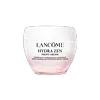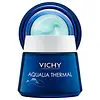What's inside
What's inside
 Key Ingredients
Key Ingredients

 Benefits
Benefits

 Concerns
Concerns

 Ingredients Side-by-side
Ingredients Side-by-side

Water
Skin ConditioningGlycerin
HumectantPropylene Glycol
HumectantButyrospermum Parkii Butter
Skin ConditioningDimethicone
EmollientOryza Sativa Bran Oil
EmollientSilica
AbrasiveCI 14720
Cosmetic ColorantZea Mays Oil
EmulsifyingLecithin
EmollientTocopheryl Acetate
AntioxidantSodium Hyaluronate
HumectantSodium Hydroxide
BufferingHydroxypalmitoyl Sphinganine
Skin ConditioningPhenoxyethanol
PreservativeStearalkonium Hectorite
Gel FormingPaeonia Suffruticosa Extract
Skin ConditioningEugenol
PerfumingTriticum Vulgare Germ Oil
EmollientTriticum Vulgare Germ Extract
Skin ConditioningChlorphenesin
AntimicrobialPolysorbate 80
EmulsifyingPolycaprolactone
StabilisingPoloxamer 188
EmulsifyingDimethiconol
EmollientAmmonium Polyacryloyldimethyl Taurate
Emulsion StabilisingLimonene
PerfumingBenzyl Alcohol
PerfumingIsohexadecane
EmollientPropylene Carbonate
Solvent2-Oleamido-1,3-Octadecanediol
Skin ConditioningAlpha-Isomethyl Ionone
PerfumingAcrylamide
Acrylates/C10-30 Alkyl Acrylate Crosspolymer
Emulsion StabilisingCeramide 3
Skin ConditioningMoringa Oleifera Seed Extract
Skin ConditioningSesamum Indicum Oil Unsaponifiables
EmollientDisodium EDTA
Rosa Gallica Callus Extract
AntioxidantOctyldodecanol
EmollientButylene Glycol
HumectantCitronellol
PerfumingParfum
MaskingWater, Glycerin, Propylene Glycol, Butyrospermum Parkii Butter, Dimethicone, Oryza Sativa Bran Oil, Silica, CI 14720, Zea Mays Oil, Lecithin, Tocopheryl Acetate, Sodium Hyaluronate, Sodium Hydroxide, Hydroxypalmitoyl Sphinganine, Phenoxyethanol, Stearalkonium Hectorite, Paeonia Suffruticosa Extract, Eugenol, Triticum Vulgare Germ Oil, Triticum Vulgare Germ Extract, Chlorphenesin, Polysorbate 80, Polycaprolactone, Poloxamer 188, Dimethiconol, Ammonium Polyacryloyldimethyl Taurate, Limonene, Benzyl Alcohol, Isohexadecane, Propylene Carbonate, 2-Oleamido-1,3-Octadecanediol, Alpha-Isomethyl Ionone, Acrylamide, Acrylates/C10-30 Alkyl Acrylate Crosspolymer, Ceramide 3, Moringa Oleifera Seed Extract, Sesamum Indicum Oil Unsaponifiables, Disodium EDTA, Rosa Gallica Callus Extract, Octyldodecanol, Butylene Glycol, Citronellol, Parfum
Water
Skin ConditioningGlycerin
HumectantNiacinamide
SmoothingPropanediol
SolventButyrospermum Parkii Butter
Skin ConditioningCaprylic/Capric Triglyceride
MaskingDimethicone
EmollientSqualane
EmollientGinkgo Biloba Leaf Extract
Skin ConditioningCarbomer
Emulsion StabilisingDimethiconol
EmollientCaffeine
Skin ConditioningSodium Hyaluronate
HumectantSodium Polyacrylate
AbsorbentAmmonium Polyacryloyldimethyl Taurate
Emulsion StabilisingDisodium EDTA
Caprylyl Glycol
EmollientCitric Acid
BufferingBiosaccharide Gum-1
HumectantPhenoxyethanol
PreservativeCI 42090
Cosmetic ColorantParfum
MaskingWater, Glycerin, Niacinamide, Propanediol, Butyrospermum Parkii Butter, Caprylic/Capric Triglyceride, Dimethicone, Squalane, Ginkgo Biloba Leaf Extract, Carbomer, Dimethiconol, Caffeine, Sodium Hyaluronate, Sodium Polyacrylate, Ammonium Polyacryloyldimethyl Taurate, Disodium EDTA, Caprylyl Glycol, Citric Acid, Biosaccharide Gum-1, Phenoxyethanol, CI 42090, Parfum
Ingredients Explained
These ingredients are found in both products.
Ingredients higher up in an ingredient list are typically present in a larger amount.
Ammonium Polyacryloyldimethyl Taurate is a polymer made from ammonium salts. It helps add stability and texture to a product. This ingredient is stable over a wide pH range.
Due to its ability to absorb water, it can help thicken the texture of a product. As an emulsion stabilizer, this ingredient is stabilizes other ingredients to create a consistent texture.
According to a manufacturer, it helps create a "smooth, light and fresh" texture.
Learn more about Ammonium Polyacryloyldimethyl TaurateThis ingredient is also known as shea butter. It is an effective skin hydrator and emollient.
Emollients help soothe and soften your skin. It does this by creating a protective film on your skin. This barrier helps trap moisture and keeps your skin hydrated. Emollients may be effective at treating dry or itchy skin.
Shea butter is rich in antioxidants. Antioxidants help fight free-radicals, or molecules that may harm the body. It is also full of fatty acids including stearic acid and linoleic acid. These acids help replenish the skin and keep skin moisturized.
While Shea Butter has an SPF rating of about 3-4, it is not a sunscreen replacement.
Shea butter may not be fungal acne safe. We recommend speaking with a professional if you have any concerns.
Learn more about Butyrospermum Parkii ButterDimethicone is a type of synthetic silicone created from natural materials such as quartz.
What it does:
Dimethicone comes in different viscosities:
Depending on the viscosity, dimethicone has different properties.
Ingredients lists don't always show which type is used, so we recommend reaching out to the brand if you have questions about the viscosity.
This ingredient is unlikely to cause irritation because it does not get absorbed into skin. However, people with silicone allergies should be careful about using this ingredient.
Note: Dimethicone may contribute to pilling. This is because it is not oil or water soluble, so pilling may occur when layered with products. When mixed with heavy oils in a formula, the outcome is also quite greasy.
Learn more about DimethiconeDimethiconol is a silicone that resembles the popular dimethicone. Like other silicones, it is an emollient. Emollients create a thin film on skin to prevent moisture from escaping.
This ingredient helps to create a silky texture and improve spreadability. Due to its high molecular weight and thickness, it is often combined with cyclopentasiloxane.
Disodium EDTA plays a role in making products more stable by aiding other preservatives.
It is a chelating agent, meaning it neutralizes metal ions that may be found in a product.
Disodium EDTA is a salt of edetic acid and is found to be safe in cosmetic ingredients.
Learn more about Disodium EDTAGlycerin is already naturally found in your skin. It helps moisturize and protect your skin.
A study from 2016 found glycerin to be more effective as a humectant than AHAs and hyaluronic acid.
As a humectant, it helps the skin stay hydrated by pulling moisture to your skin. The low molecular weight of glycerin allows it to pull moisture into the deeper layers of your skin.
Hydrated skin improves your skin barrier; Your skin barrier helps protect against irritants and bacteria.
Glycerin has also been found to have antimicrobial and antiviral properties. Due to these properties, glycerin is often used in wound and burn treatments.
In cosmetics, glycerin is usually derived from plants such as soybean or palm. However, it can also be sourced from animals, such as tallow or animal fat.
This ingredient is organic, colorless, odorless, and non-toxic.
Glycerin is the name for this ingredient in American English. British English uses Glycerol/Glycerine.
Learn more about GlycerinParfum is a catch-all term for an ingredient or more that is used to give a scent to products.
Also called "fragrance", this ingredient can be a blend of hundreds of chemicals or plant oils. This means every product with "fragrance" or "parfum" in the ingredients list is a different mixture.
For instance, Habanolide is a proprietary trade name for a specific aroma chemical. When used as a fragrance ingredient in cosmetics, most aroma chemicals fall under the broad labeling category of “FRAGRANCE” or “PARFUM” according to EU and US regulations.
The term 'parfum' or 'fragrance' is not regulated in many countries. In many cases, it is up to the brand to define this term.
For instance, many brands choose to label themselves as "fragrance-free" because they are not using synthetic fragrances. However, their products may still contain ingredients such as essential oils that are considered a fragrance by INCI standards.
One example is Calendula flower extract. Calendula is an essential oil that still imparts a scent or 'fragrance'.
Depending on the blend, the ingredients in the mixture can cause allergies and sensitivities on the skin. Some ingredients that are known EU allergens include linalool and citronellol.
Parfum can also be used to mask or cover an unpleasant scent.
The bottom line is: not all fragrances/parfum/ingredients are created equally. If you are worried about fragrances, we recommend taking a closer look at an ingredient. And of course, we always recommend speaking with a professional.
Learn more about ParfumPhenoxyethanol is a preservative that has germicide, antimicrobial, and aromatic properties. Studies show that phenoxyethanol can prevent microbial growth. By itself, it has a scent that is similar to that of a rose.
It's often used in formulations along with Caprylyl Glycol to preserve the shelf life of products.
Sodium Hyaluronate is hyaluronic acid's salt form. It is commonly derived from the sodium salt of hyaluronic acid.
Like hyaluronic acid, it is great at holding water and acts as a humectant. This makes it a great skin hydrating ingredient.
Sodium Hyaluronate is naturally occurring in our bodies and is mostly found in eye fluid and joints.
These are some other common types of Hyaluronic Acid:
Learn more about Sodium HyaluronateWater. It's the most common cosmetic ingredient of all. You'll usually see it at the top of ingredient lists, meaning that it makes up the largest part of the product.
So why is it so popular? Water most often acts as a solvent - this means that it helps dissolve other ingredients into the formulation.
You'll also recognize water as that liquid we all need to stay alive. If you see this, drink a glass of water. Stay hydrated!
Learn more about Water